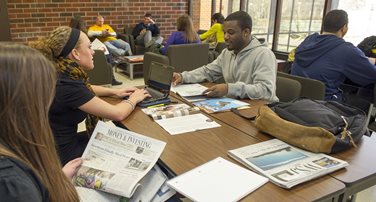Need help with research? You’ve come to the right place! Several professional librarians are willing and able to assist you with your research needs. We’ll gladly guide you to the right resources, provide a fast track to often used links, and assist with minor document/technical issues. All you need to do is ask.
You have several ways of contacting us – walk-in, email, chat, text-a-librarian and phone. Please visit Ask-A-Librarian on the library page for further information.
